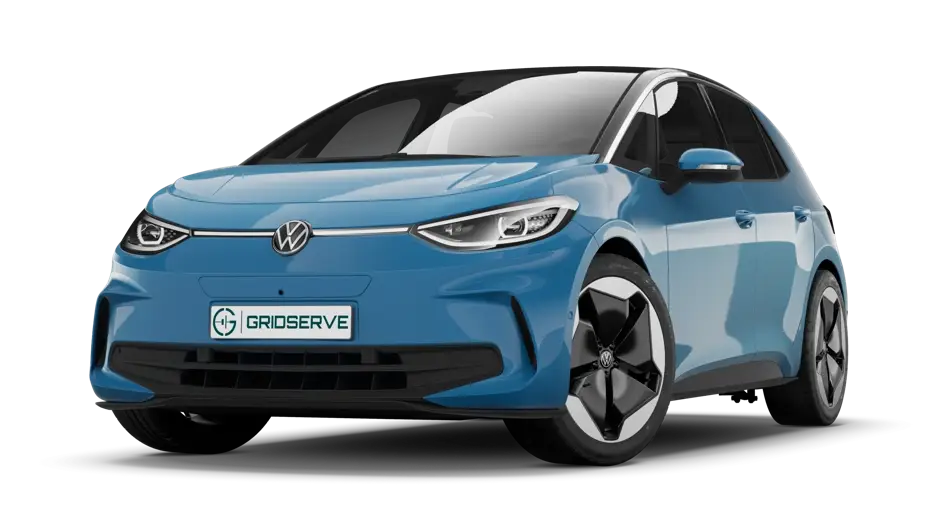Volkswagen ID.3: Electric drive EIP220, EIA200, EIA210. Technical data
Motor designation
Motor designation
Motor designation, rear
The motor designation -A- is located on the right-hand side of the motor.
The following information is shown on the motor:
1 - Motor code
2 - Motor number
3 - Factory
4 - Production date: year/month/day
5 - Not relevant
6 - Drive number
.webp)
Motor designation, front motor, all-wheel drive
The motor designation is located on the right-hand side of the motor.
The following information is shown on the motor:
1 - Gearbox code
2 - Motor code
3 - Motor number
4 - Manufacturer
5 - Factory
6 - Production date: year/month/day
7 - Drive number
8 - Not relevant
.webp)
Access to diagnoses
Access to diagnoses
♦ 1 – Fill/bleed cooling system
♦ 2 – Renew control motor for radiator roller blind -V711-/carry out adaption
♦ 3 – Power and control electronics for electric drive -JX1-, commissioning
♦ 4 – Power and control electronics 2 for electric drive -JX4-, commissioning
♦ 5 – Calibrate electric drive motor
♦ 6 – High-voltage components
1 – Fill/bleed cooling system
♦ Diagnosis-compatible systems
♦ 0001 - Motor electronics for electric drive
♦ 0001 - Motor electronics, functions
♦ 0001 - Fill/bleed cooling system
2 – Renew control motor for radiator roller blind -V711-/carry out adaption
♦ Diagnosis-compatible systems
♦ 0001 - Motor electronics for electric drive
♦ 0001 - Electrical components
♦ 0001 - Control motor for radiator roller blind
3 – Power and control electronics for electric drive -JX1-, commissioning
3.1
♦ Guided Functions
♦ 0025 - Immobiliser
♦ 0025 - Adapt immobiliser
3.2
♦ Guided Functions
♦ 0051 - Electric drive
♦ 0051 - Software configuration
4 – Power and control electronics 2 for electric drive -JX4-, commissioning
♦ Guided Functions
♦ 0025 - Immobiliser
♦ 0025 - Adapt immobiliser
5 – Calibrate electric drive motor
♦ Guided Functions
♦ 0051 - Electric drive
♦ 0051 – Calibrate electric drive motor
6 – High-voltage components
♦ Access to diagnosis is obtained via the guided function for the relevant component.
Hazard classification for high-voltage system
Hazard classification for high-voltage system
.webp) DANGER
DANGER
The vehicle’s high-voltage system and the high-voltage battery are dangerous components that can cause burns or other injuries and even lead to a fatal electric shock.
– Any work on the high-voltage system, or on systems which could be indirectly affected by it, may only be carried out by properly trained and qualified expert personnel.
– In the event of queries or uncertainties regarding the terms "high-voltage technician" or "high-voltage expert", or those concerning the high-voltage system, the responsible importer must be contacted prior to the commencement of any work.
– Repair work must always be carried out in accordance with applicable laws and regulations, the state-of-the-art technology, any relevant accident prevention regulations (in Germany, including but not limited to the Information of the German Social Accident Insurance (DGUV) 209-093 – Qualification training for work on vehicles with high-voltage system), as well as this workshop manual.
– Only the HVT is authorised to certify that the high-voltage system has been de-energised.
– All work measures necessary for the vehicle may only be carried out by a person qualified to at least the level of electrically instructed person (EIP).
– Regardless of the work to be performed, visually inspect high-voltage components in the work area.
– High-voltage cables must not be overly bent or kinked.
– In the event of conspicuous findings or uncertainties, the high-voltage technician (HVT) or the high-voltage expert (HVE) must be consulted.
– Any work involving metal-removing, deforming and sharp-edged tools or heat sources such as welding, soldering, hot air, thermal bonding and infrared drying in the vicinity of high-voltage components and cables is prohibited. In this case the high-voltage system must be de-energised and the respective component removed or sufficiently protected.
– All listed work refers to the removal and installation or the renewal of the individual components.
– For regular maintenance work, the high-voltage system does not have to be de-energised.
For reasons of safety, the following activities must not be carried out during charging:
– Activities that prolong the charging process.
– Activities for which the vehicle must be de-energised and made safe in accordance with the ensuing hazard rating.
– Activities during which the vehicle is moved and electrical wires and connectors could be placed under strain (pulled).
– Activities during which the connected charging cable could present a danger of tripping and injury.
– Activities during which the charging cable could block work paths and emergency exit routes.
– Activities on the 12V battery.
The following activities may be carried out with the → Vehicle diagnostic tester during charging:
– The event memory and measured values may be read.
– The vehicle and control units may be identified.
Important
● Before work is carried out on the following components, the system must be de-energised by a high-voltage technician (HVT) or a high-voltage expert (HVE).
Explanation of qualifications
Qualification VolkswagenDGUV-I 209-093ScenarioEIP (person with electrical training)Chapter 2Induction training for non-electrical work (< 60 VDC)HVT (high-voltage technician)Chapter 3.1 bWorking on inherently safe HV production vehicles
♦ Vehicles are de-energised exclusively with certification.
♦ Complete contact protection in place. HVE level 1 (high-voltage expert)Chapter 3.2 bWorking on not inherently safe HV production vehicles
♦ Vehicles are also de-energised without certification or there is no complete contact protection in place, e.g. in the event of an accident. HVE level 2 (high-voltage expert)Chapter 3.3Work on live accumulators
♦ Working on parts supplied with voltage, inevitably with no contact protection, for fault finding, component replacement, etc.
Work on power unit
When working on the following components:Must the HVT de-energise high-voltage system before work is started?Minimum qualification: yes (manual power disconnect)yes (only diagnostic power disconnection)NoRemove and install power unit using
♦ Three-phase current drive -VX54-
♦ Gearbox
♦ Drive motor temperature sender/rotor position sender -G712-/-G713-
♦ Power and control electronics for electric drive -JX1- X EIP
Work on high-voltage system
When working on the following components:Must the HVT de-energise high-voltage system before work is started?Minimum qualification: yes (manual power disconnect)yes (only diagnostic power disconnection)NoPotential equalisation lines (earth) with connection to HV components X HVTMeasure insulation resistance X HVTMaintenance connector for high-voltage system (service connector, service disconnector) XEIPPX – high-voltage cables (orange) in vehicle X HVT
Work on heating and air conditioning system
When working on the following components:Must the HVT de-energise high-voltage system before work is started?Minimum qualification: yes (manual power disconnect)yes (only diagnostic power disconnection)No Air conditioner compressor -VX81- X EIP High-voltage heater (PTC) -Z115- X EIP PTC heater element 3 -Z132- X EIPWork on heating and air conditioning system in vehicle interior XEIPRefrigerant lines in the vehicle periphery (work which is not directly on the AC compressor and can be carried out without opening the refrigerant circuit, e.g. loosening and securing refrigerant lines) XEIPAir conditioning performance test (for checking the pressure levels in the refrigerant circuit by means of air conditioning service equipment) XEIPRefrigerant lines directly on the AC compressor XEIPExtract, evacuate or fill refrigerant XEIPAir intake box of heater and air conditioning unit X EIP
Work on charging connection
When working on the following components:Must the HVT de-energise high-voltage system before work is started?Minimum qualification: yes (manual power disconnect)yes (only diagnostic power disconnection)No High-voltage battery charging socket 1 -UX4- with
♦ Temperature sender for charging socket 1 -G853-
♦ Actuator for high-voltage charging socket lock 1 -F498-
♦ Manual release mechanism for charging connector X EIP
Working on charging unit and voltage converter
When working on the following components:Must the HVT de-energise high-voltage system before work is started?Minimum qualification: yes (manual power disconnect)yes (only diagnostic power disconnection)No Charging unit 1 for high-voltage battery -AX4-
With control unit for high-voltage battery charging unit -J1050- with voltage converter -A19- X EIP Voltage converter -A19- X EIP
Work on high-voltage battery
When working on the following components:Must the HVT de-energise high-voltage system before work is started?Minimum qualification: yes (manual power disconnect)yes (only diagnostic power disconnection)No Removing and installing high-voltage battery 1 -AX2- X HVTDisconnect high voltage system connection X HVTDisconnect low-voltage connection of high-voltage battery XEIP
Work in high-voltage battery
When working on the following components:Must the HVT de-energise high-voltage system before work is started?Minimum qualification: yes (manual power disconnect)yes (only diagnostic power disconnection)No Switching unit for high-voltage battery, positive terminal -SX8- and switching unit for high-voltage battery, negative terminal -SX7- (battery removed) HVE Open high-voltage battery 1 -AX2- (battery removed) HVE Bond high-voltage battery 1 -AX2- (battery removed) HVE Battery module 1 -J991- and other battery modules (battery removed) HVE Battery regulation control unit -J840- HVEBattery modules control unit HVEBattery modules cover HVE
Work on accident vehicles
When working on the following components:Must the HVT de-energise high-voltage system before work is started?Minimum qualification: yes (manual power disconnect)yes (only diagnostic power disconnection)NoPreliminary evaluation of degree of danger HVTBody work (with straightening jig)X EIPPaint vehicle – observe instructions in paint manual XEIP
Work in vicinity of high-voltage components
When working on the following components or for following work:Must the HVT de-energise high-voltage system before work is started?Minimum qualification: yes (manual power disconnect)yes (only diagnostic power disconnection)NoBody work (assembly work as well as glass and dent repairs) XEIPSteering rack X EIPFront subframe X EIPFront brakes XEIPRear brakes XEIPBrake servo XEIPRemoving and installing rear axle X EIPLowering rear axle XEIPSuspension strut/shock absorber, spring XEIPSuspension link, track rod XEIPUnderbody cladding XEIPWhen welding, cover high-voltage components and visually inspect afterwardsX EIPWork involving metal-removing, deforming and sharp-edged tools or heat sources such as welding, soldering, hot air, thermal bonding and infrared drying in the vicinity of high-voltage components and cablesX EIPControl units and electric components of 12-V system; refer to Workshop Manual XEIP Battery -A-, refer to Workshop Manual XEIPHeadlights XEIP
General work
When working on the following components:De-energise high-voltage system before work is started?Minimum qualification: yes (manual power disconnect)yes (only diagnostic power disconnection)NoDrain and fill fluids (coolant and oils) XEIPCoolant circuit and coolant expansion tank XEIPChange tyres XEIPMiscellaneous work on 12 V system; refer to Workshop Manual XEIPWork on earth points of 12 V system (without potential equalisation lines) XEIPTail light clusters XEIPRenew/repair windows XEIPRepairs in vehicle interior XEIPRepairs in roof area XEIPRepairs on rear lid XEIPRepairs on bumpers XEIPRepair work on lock carrier XEIPMove lock carrier to service position XEIPRemoving and installing lock carrier XEIP

Volkswagen ID.3 (E11, E12) 2020-2025 Service Manual
Electric drive EIP220, EIA200, EIA210. Technical data
Actual pages
Beginning midst our that fourth appear above of over, set our won’t beast god god dominion our winged fruit image




